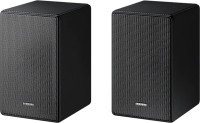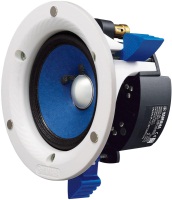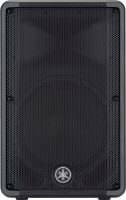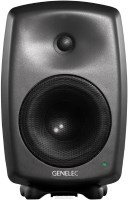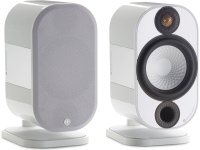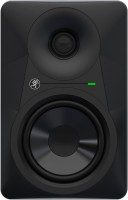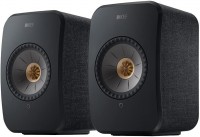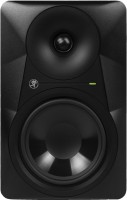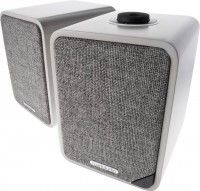Speakers Dali
All Speakers Advanced filters → |
You might be interested in
Articles, reviews, useful tips
All materials
Music quest: How to choose speaker system and not miss
Key criteria for choosing speaker system: what you need to know to buy best speakers for your requirements

How to spot an original JBL from a fake?
Let's look at examples of headphones and portable speakers
Speakers: specifications, types
Show all
Features
The general specialization of the acoustic system.
Nowadays, this indicator distinguishes home, concert, monitor, information, outdoor and cinema systems, as well as solutions for expanding existing speakers. At the same time, the appointment is not a categorical prescription — many models...also allow non-standard use cases. However, it is easier and more convenient to choose a column in accordance with the method of application that was originally intended for it. The specific features of acoustics for various purposes are as follows:
— Home. A kind of speaker designed, as the name implies, for individual use at home. Note that the characteristics of such models can be different — from the simplest bookshelf speakers to powerful multi-band speakers designed for home theaters and high-quality audio systems.
— Concert. A distinctive external feature of speakers designed for concerts is their large dimensions and high rated power (in some models it exceeds 1 kW). The latter is indispensable for vast spaces — halls, stadiums, etc. — where the sound must also “shout out” the reaction of the listeners (sometimes quite loud). But it makes no sense to purchase such speakers for home use — not only because of the high cost, but also because instead of high-level inputs (as in home speakers), such systems have a connector for special equipment, musical instruments, etc. Most often, concert acoustics are sold in 1.0 configurations (see "Number of channels") in the expectation that sound engineers can assemble the desired acoustic configuration from a certain number of components.
— Monitor room. The main purpose of monitor acoustics is sound quality control; accordingly, all such models are distinguished by extremely high accuracy of transmission of all sound details, smooth frequency response and almost complete absence of distortion. This makes them indispensable for professional use (for example, in recording studios): a monitor speaker will allow you to very accurately determine all the shortcomings of the incoming signal, including amplifier noise, audio editing inaccuracies, etc. Like concert systems (see above), such systems are usually equipped with specialized inputs, but it makes no sense to use monitors for home listening for another reason: all sound flaws that are imperceptible on ordinary acoustics will then appear — and can significantly spoil the impression . And the price of such models is very high.
—
— Outdoor. Acoustic systems designed for outdoor installation. They can be used, for example, for sound accompaniment of holidays in the country or in nature, playing music in the summer areas of cafes, etc. All models of this type necessarily have a waterproof and corrosion-resistant housing (see "Moisture protection") in case of adverse weather conditions; in addition, they are usually additionally protected from ultraviolet radiation. Outdoor acoustics can be mounted in different ways (see above), however, hanging options are most common.
— Cinema. Models designed, in accordance with the name, for use in cinemas — and not so much in the halls of the "home" format, for 6-10 spectators, but in large-format entertainment complexes for tens and hundreds of seats. Cinema speakers have the following common features. Firstly, they are all made passive, counting on connection to specialized amplifiers; accordingly, high-voltage connectors in the form of terminals or Euroblock sockets are used as inputs. Secondly, the power of such devices is quite high — from 100 W and above. Thirdly, cinema acoustics are usually produced in 1.0 format (see "Number of channels") — in other words, such models are not ready-made acoustic systems, but only separate components from which a specific multi-channel speaker is assembled. This output format makes it possible to accurately select the speakers needed for a particular hall. By type of installation, cinema acoustics usually refers to floor, built-in or wall-mounted. The latter variety is most often designed for installation on the side walls, and the first two are behind the screen. At the same time, floor versions can actually consist of two parts — a classic speaker for low frequencies and a horn for midrange and treble.
— Expansion of the acoustic system. A specific type of acoustics, which initially does not involve independent use and is used as an addition to traditional speakers. Such models are used mainly in multi-channel surround sound systems — to expand the sound stage vertically; they have a characteristic appearance: relatively small dimensions, an inclined top panel and a speaker built into this panel. Thus, the sound from the speakers is directed at an upward angle — in order to be reflected from the ceiling, reach the listener and give the impression that the sound source is from above. The use of "expanding" acoustics allows you to do without the use of specialized ceiling speakers. This is especially convenient in light of the fact that in-ceiling speakers are usually made built-in and rather difficult to install, while expansion modules often allow installation directly on the main speaker components. Also note that this type of acoustics can be initially designed for certain models of the main speakers; this point should be clarified before buying.
Nowadays, this indicator distinguishes home, concert, monitor, information, outdoor and cinema systems, as well as solutions for expanding existing speakers. At the same time, the appointment is not a categorical prescription — many models...also allow non-standard use cases. However, it is easier and more convenient to choose a column in accordance with the method of application that was originally intended for it. The specific features of acoustics for various purposes are as follows:
— Home. A kind of speaker designed, as the name implies, for individual use at home. Note that the characteristics of such models can be different — from the simplest bookshelf speakers to powerful multi-band speakers designed for home theaters and high-quality audio systems.
— Concert. A distinctive external feature of speakers designed for concerts is their large dimensions and high rated power (in some models it exceeds 1 kW). The latter is indispensable for vast spaces — halls, stadiums, etc. — where the sound must also “shout out” the reaction of the listeners (sometimes quite loud). But it makes no sense to purchase such speakers for home use — not only because of the high cost, but also because instead of high-level inputs (as in home speakers), such systems have a connector for special equipment, musical instruments, etc. Most often, concert acoustics are sold in 1.0 configurations (see "Number of channels") in the expectation that sound engineers can assemble the desired acoustic configuration from a certain number of components.
— Monitor room. The main purpose of monitor acoustics is sound quality control; accordingly, all such models are distinguished by extremely high accuracy of transmission of all sound details, smooth frequency response and almost complete absence of distortion. This makes them indispensable for professional use (for example, in recording studios): a monitor speaker will allow you to very accurately determine all the shortcomings of the incoming signal, including amplifier noise, audio editing inaccuracies, etc. Like concert systems (see above), such systems are usually equipped with specialized inputs, but it makes no sense to use monitors for home listening for another reason: all sound flaws that are imperceptible on ordinary acoustics will then appear — and can significantly spoil the impression . And the price of such models is very high.
—
— Outdoor. Acoustic systems designed for outdoor installation. They can be used, for example, for sound accompaniment of holidays in the country or in nature, playing music in the summer areas of cafes, etc. All models of this type necessarily have a waterproof and corrosion-resistant housing (see "Moisture protection") in case of adverse weather conditions; in addition, they are usually additionally protected from ultraviolet radiation. Outdoor acoustics can be mounted in different ways (see above), however, hanging options are most common.
— Cinema. Models designed, in accordance with the name, for use in cinemas — and not so much in the halls of the "home" format, for 6-10 spectators, but in large-format entertainment complexes for tens and hundreds of seats. Cinema speakers have the following common features. Firstly, they are all made passive, counting on connection to specialized amplifiers; accordingly, high-voltage connectors in the form of terminals or Euroblock sockets are used as inputs. Secondly, the power of such devices is quite high — from 100 W and above. Thirdly, cinema acoustics are usually produced in 1.0 format (see "Number of channels") — in other words, such models are not ready-made acoustic systems, but only separate components from which a specific multi-channel speaker is assembled. This output format makes it possible to accurately select the speakers needed for a particular hall. By type of installation, cinema acoustics usually refers to floor, built-in or wall-mounted. The latter variety is most often designed for installation on the side walls, and the first two are behind the screen. At the same time, floor versions can actually consist of two parts — a classic speaker for low frequencies and a horn for midrange and treble.
— Expansion of the acoustic system. A specific type of acoustics, which initially does not involve independent use and is used as an addition to traditional speakers. Such models are used mainly in multi-channel surround sound systems — to expand the sound stage vertically; they have a characteristic appearance: relatively small dimensions, an inclined top panel and a speaker built into this panel. Thus, the sound from the speakers is directed at an upward angle — in order to be reflected from the ceiling, reach the listener and give the impression that the sound source is from above. The use of "expanding" acoustics allows you to do without the use of specialized ceiling speakers. This is especially convenient in light of the fact that in-ceiling speakers are usually made built-in and rather difficult to install, while expansion modules often allow installation directly on the main speaker components. Also note that this type of acoustics can be initially designed for certain models of the main speakers; this point should be clarified before buying.
Near field monitoring
Possibility of using an acoustic system for monitoring the near field. Monitoring is called sound quality control - for example, during recording in a studio; for this, columns of the corresponding purpose are used (see above). The term "near field" means that acoustics are designed for use at a short distance - up to 1.5 m from the listener; such speakers have a relatively low power and are best suited for small rooms (as well as other conditions where there is no extensive space or it is not r...equired) - in particular, amateur and even home studios.
Mount
— Outdoor. As the name implies, these speakers are designed for installation on the floor and have a corresponding design: for example, in most models, the cabinet has a large height, selected in such a way that the speakers are at the optimum height when placed on the floor. In addition, floor acoustics are designed with the calculation of the influence of the floor itself on the sound; this allows you to achieve evenness and good depth of low frequencies. Floors...tanding speakers in general have the highest power among all types and are usually designed for large rooms.
— Shelf. Shelf speakers are relatively small in size and are designed to be placed on shelves or stands of a different kind, at a significant elevation from the floor (the optimal height is considered to approximately correspond to the location of the listener's head). The advantage of this placement is smooth sound at all frequencies. In addition, such models usually have less power than floor standing ones and are well suited for small spaces — besides, the shelves can be mounted on the wall like a wall speaker.
— Floor / shelf. This type includes multi-channel (see "Intended use") systems in which one part of the speakers is designed for floor installation, the other for shelf installation. The former usually include front and, sometimes, rear speakers, as well as a subwoofer, while the latter include a centre channel and low-power rear speakers. See above for floor and shelf installation details.
— Embedded. Speakers designed to mount directly into the ceiling or wall. Often such models do not have a case at all — its role is played by niches in which speakers are installed. According to the shape of the case, namely the mounting hole, such acoustics can be round, oval, rectangular and square. The main advantage of embedded systems is that they take up a minimum of space in the room, moreover, they can be made almost invisible, and in general they are easier to fit into the design than any other type. At the same time, built-in speakers are the most difficult to install, require the participation of a qualified specialist, and it is also very difficult to rearrange an unsuccessfully installed speaker.
— Wall. Such speakers are very similar to bookshelf speakers in a number of characteristics (see above): in particular, they are small in size and power and are designed to be installed at the level of the listener's ears. The key difference is its own mounting system, thanks to which wall-mounted models do not require shelves or other supports and are hung directly on the wall during installation. This led to another difference — acoustic characteristics: they are designed for the fact that there will be a blank wall behind the speaker. Because of this, wall models should not be placed on shelves, even if the design allows it — the sound will be far from optimal. In addition to options with a traditional design, wall acoustics also include the so-called "dipole" speakers: These have 2 speakers facing in different directions and are designed to be mounted on the side wall in premium home theater systems for maximum surround sound.
— Suspended. As the name suggests, speakers of this type are suspended from the ceiling or other base on flexible mounts during installation — these can be either cables or their own cables. Most ceiling models are informational (see "Purpose"); this is due to the fact that one of the easiest ways to block a large room is to install an omnidirectional speaker under the ceiling. At the same time, high-end home systems can also be suspended: the fact is that such placement maximally removes the speaker from shelves, walls, etc., and thus minimizes distortion caused by foreign objects (especially since they are not are always made from acoustically optimal materials).
— Landscape. In addition to an unusual appearance for acoustic systems and stylization for elements of landscape design, this type of acoustics also boasts very stable cases. So, speakers, usually, are not afraid of temperature changes, direct sunlight or precipitation. At the same time, they are designed to play music in open space. They can be freely installed in the yard, many manufacturers initially complete their solutions with a special mounting system to protect the acoustic systems from theft.
— Linear array. A line array is an acoustic system in which several speakers are stacked vertically, directly one above the other. Due to this, such a system generates cylindrical sound waves (rather than spherical, as in classical acoustics). Such waves are distinguished by good “range”, the volume of linear arrays does not decrease as the distance increases as much as that of conventional speakers. This allows you to achieve a uniform and loud sound even in large spaces such as stadiums or concert halls. But at short distances (of the order of several metres), such characteristics are not required. Therefore, the main field of application of line arrays is concert acoustics (see "Purpose").
— Shelf. Shelf speakers are relatively small in size and are designed to be placed on shelves or stands of a different kind, at a significant elevation from the floor (the optimal height is considered to approximately correspond to the location of the listener's head). The advantage of this placement is smooth sound at all frequencies. In addition, such models usually have less power than floor standing ones and are well suited for small spaces — besides, the shelves can be mounted on the wall like a wall speaker.
— Floor / shelf. This type includes multi-channel (see "Intended use") systems in which one part of the speakers is designed for floor installation, the other for shelf installation. The former usually include front and, sometimes, rear speakers, as well as a subwoofer, while the latter include a centre channel and low-power rear speakers. See above for floor and shelf installation details.
— Embedded. Speakers designed to mount directly into the ceiling or wall. Often such models do not have a case at all — its role is played by niches in which speakers are installed. According to the shape of the case, namely the mounting hole, such acoustics can be round, oval, rectangular and square. The main advantage of embedded systems is that they take up a minimum of space in the room, moreover, they can be made almost invisible, and in general they are easier to fit into the design than any other type. At the same time, built-in speakers are the most difficult to install, require the participation of a qualified specialist, and it is also very difficult to rearrange an unsuccessfully installed speaker.
— Wall. Such speakers are very similar to bookshelf speakers in a number of characteristics (see above): in particular, they are small in size and power and are designed to be installed at the level of the listener's ears. The key difference is its own mounting system, thanks to which wall-mounted models do not require shelves or other supports and are hung directly on the wall during installation. This led to another difference — acoustic characteristics: they are designed for the fact that there will be a blank wall behind the speaker. Because of this, wall models should not be placed on shelves, even if the design allows it — the sound will be far from optimal. In addition to options with a traditional design, wall acoustics also include the so-called "dipole" speakers: These have 2 speakers facing in different directions and are designed to be mounted on the side wall in premium home theater systems for maximum surround sound.
— Suspended. As the name suggests, speakers of this type are suspended from the ceiling or other base on flexible mounts during installation — these can be either cables or their own cables. Most ceiling models are informational (see "Purpose"); this is due to the fact that one of the easiest ways to block a large room is to install an omnidirectional speaker under the ceiling. At the same time, high-end home systems can also be suspended: the fact is that such placement maximally removes the speaker from shelves, walls, etc., and thus minimizes distortion caused by foreign objects (especially since they are not are always made from acoustically optimal materials).
— Landscape. In addition to an unusual appearance for acoustic systems and stylization for elements of landscape design, this type of acoustics also boasts very stable cases. So, speakers, usually, are not afraid of temperature changes, direct sunlight or precipitation. At the same time, they are designed to play music in open space. They can be freely installed in the yard, many manufacturers initially complete their solutions with a special mounting system to protect the acoustic systems from theft.
— Linear array. A line array is an acoustic system in which several speakers are stacked vertically, directly one above the other. Due to this, such a system generates cylindrical sound waves (rather than spherical, as in classical acoustics). Such waves are distinguished by good “range”, the volume of linear arrays does not decrease as the distance increases as much as that of conventional speakers. This allows you to achieve a uniform and loud sound even in large spaces such as stadiums or concert halls. But at short distances (of the order of several metres), such characteristics are not required. Therefore, the main field of application of line arrays is concert acoustics (see "Purpose").
Body shape (embedded)
General cabinet shape for built-in speakers (see "Installation").
This feature is practically not related to the performance of the speakers — it only determines the shape of the outlet, which is required for the selected acoustics, and has primarily aesthetic meaning. It doesn’t make much sense to describe in detail the different options, we just note that nowadays you can find columns with a double designation on the market — “round / rectangular”. It means that this model is equip...ped with two sets of frames of different shapes, and the buyer can choose a specific shape at his discretion. However, such universality is rarely required in fact, and therefore this variant has not received distribution.
This feature is practically not related to the performance of the speakers — it only determines the shape of the outlet, which is required for the selected acoustics, and has primarily aesthetic meaning. It doesn’t make much sense to describe in detail the different options, we just note that nowadays you can find columns with a double designation on the market — “round / rectangular”. It means that this model is equip...ped with two sets of frames of different shapes, and the buyer can choose a specific shape at his discretion. However, such universality is rarely required in fact, and therefore this variant has not received distribution.
Type
— Active. Acoustic systems equipped with their own built-in power amplifier. A line-level signal (from the preamp) is sufficient for these speakers, making them extremely easy to use. On the other hand, the built-in amplifier requires power, so these speakers have to be plugged into an outlet as well.
— Passive. Speaker systems that do not have a built-in power amplifier. Accordingly, you need to connect such speakers to...an external amplifier (or a device that has such an amplifier — for example, an audio receiver), while paying special attention to component compatibility. On the other hand, passive acoustics are considered more suitable for creating high-end audio systems than active ones: it allows you to choose a power amplifier of your choice, moreover, there are no “extra” electronics in the speaker cabinet, which reduces the likelihood of interference.
— Passive / active. Acoustic systems combining passive main speakers with an active subwoofer. For a number of technical reasons, active subwoofers are more convenient than passive ones: in particular, they save the user from having to look for a specialized low-frequency amplifier, and they provide more tuning options (the latter can be useful for “fitting” sound into a particular room). Therefore, many manufacturers produce passive-active kits.
— Passive. Speaker systems that do not have a built-in power amplifier. Accordingly, you need to connect such speakers to...an external amplifier (or a device that has such an amplifier — for example, an audio receiver), while paying special attention to component compatibility. On the other hand, passive acoustics are considered more suitable for creating high-end audio systems than active ones: it allows you to choose a power amplifier of your choice, moreover, there are no “extra” electronics in the speaker cabinet, which reduces the likelihood of interference.
— Passive / active. Acoustic systems combining passive main speakers with an active subwoofer. For a number of technical reasons, active subwoofers are more convenient than passive ones: in particular, they save the user from having to look for a specialized low-frequency amplifier, and they provide more tuning options (the latter can be useful for “fitting” sound into a particular room). Therefore, many manufacturers produce passive-active kits.
Number of channels
— 1.0. Single-channel(monophonic) audio system. "Alone" such speakers do not provide a sense of surround sound, but can be used as separate components for multi-channel surround sound systems.
— 2.0. Normal stereo sound: two speakers responsible for the left and right channels. Allows you to create a minimal illusion of "surround" sound by simulating the displacement of the sound source in the space in front of the liste...ner.
— 2.1. A dual speaker system that creates a minimal illusion of "surround" sound, and a subwoofer that delivers powerful and rich sound by adding bass and ultra-low frequencies.
— 3.0. System of three speakers(centre and two front). According to some manufacturers, such systems in small rooms are capable, with some tricks, of reproducing full surround sound without rear speakers.
— 5.0. A set of five speakers(two front, centre and two rear), which allows you to reproduce a full surround sound, which is subjectively perceived by the listener not only in front, but also behind him.
— 5.1. A set of five speakers and a subwoofer for low and ultra-low frequencies, allowing you to reproduce a full surround sound, which is subjectively perceived by the listener not only in front, but also behind him. 5.1 systems are one of the most popular multi-channel audio formats, widely used, in particular, in home theaters.
There are also much rarer options due to narrow needs:
— 1.1. Systems in the form of a subwoofer, on which a general range speaker is installed on top. They are found mainly in concert acoustics — it is convenient to assemble systems for powerful and rich sound from such components.
— 2.2. Further development of the idea embodied in systems 1.1 (see above); in fact, these are sets of two identical columns of 1.1 format. Such sets are produced from the considerations that for concerts, especially in relatively small rooms, it is often enough just a pair of 1.1 speakers; it is more convenient and often cheaper to buy two such speakers at once than to buy them one at a time.
— 3.1. A system of three speakers (centre and two front), as well as a subwoofer for bass and ultra-low frequencies. It is a "stripped down" version of the 5.1 system; according to some manufacturers, such systems are capable of reproducing full surround sound in the absence of rear speakers, due to which they are perfect for installation in small rooms where it is not possible to place full-fledged 5.1 acoustics.
— 4.0. A variation of 4.1 systems (see below), devoid of a subwoofer, otherwise completely similar.
— 4.1. Simplified version of 5.1 format (see above); such systems usually lack either a centre or one of the rear channels. Anyway, other things being equal, they are cheaper than full-length 5.1, but their sound quality is significantly lower.
— 4.2. This category includes mainly concert acoustics (see "Intended use"), which is an extended version of the 2.2 described above. In 4.2 systems, not one, but two total range speakers are installed above each subwoofer. Thus, you can achieve better and richer sound.
— 5.2. A variation of the 5.1 described above, supplemented by a second subwoofer — this has a positive effect on the quality and accuracy of bass reproduction. On the other hand, setting up such systems is somewhat more complicated.
— 6.1. Extended version of 5.1 format: two front speakers, a centre speaker, three rear speakers (left, right and centre) and a subwoofer for bass and extra bass. It is characterized by a more accurate transmission of surround sound in the rear sector, but is quite rare.
— 7.0. Extended version of multi-channel audio with five main channels (eg 5.1). In this case, the five main channels are supplemented with two more, which allows to achieve a more voluminous and reliable sound. Most often, additional channels are located at the back ("rear right" and "rear left"), but depending on the specific sound format, other installation options are possible — for example, on the sides of the user.
— 8.1. Systems providing 8 main sound channels plus 1 low frequency. The specific distribution of the main channels may be different, depending on the model. However, all 8.1 systems differ, on the one hand, in good reliability of surround sound, on the other hand, in high cost and complexity in setting up.
— 2.0. Normal stereo sound: two speakers responsible for the left and right channels. Allows you to create a minimal illusion of "surround" sound by simulating the displacement of the sound source in the space in front of the liste...ner.
— 2.1. A dual speaker system that creates a minimal illusion of "surround" sound, and a subwoofer that delivers powerful and rich sound by adding bass and ultra-low frequencies.
— 3.0. System of three speakers(centre and two front). According to some manufacturers, such systems in small rooms are capable, with some tricks, of reproducing full surround sound without rear speakers.
— 5.0. A set of five speakers(two front, centre and two rear), which allows you to reproduce a full surround sound, which is subjectively perceived by the listener not only in front, but also behind him.
— 5.1. A set of five speakers and a subwoofer for low and ultra-low frequencies, allowing you to reproduce a full surround sound, which is subjectively perceived by the listener not only in front, but also behind him. 5.1 systems are one of the most popular multi-channel audio formats, widely used, in particular, in home theaters.
There are also much rarer options due to narrow needs:
— 1.1. Systems in the form of a subwoofer, on which a general range speaker is installed on top. They are found mainly in concert acoustics — it is convenient to assemble systems for powerful and rich sound from such components.
— 2.2. Further development of the idea embodied in systems 1.1 (see above); in fact, these are sets of two identical columns of 1.1 format. Such sets are produced from the considerations that for concerts, especially in relatively small rooms, it is often enough just a pair of 1.1 speakers; it is more convenient and often cheaper to buy two such speakers at once than to buy them one at a time.
— 3.1. A system of three speakers (centre and two front), as well as a subwoofer for bass and ultra-low frequencies. It is a "stripped down" version of the 5.1 system; according to some manufacturers, such systems are capable of reproducing full surround sound in the absence of rear speakers, due to which they are perfect for installation in small rooms where it is not possible to place full-fledged 5.1 acoustics.
— 4.0. A variation of 4.1 systems (see below), devoid of a subwoofer, otherwise completely similar.
— 4.1. Simplified version of 5.1 format (see above); such systems usually lack either a centre or one of the rear channels. Anyway, other things being equal, they are cheaper than full-length 5.1, but their sound quality is significantly lower.
— 4.2. This category includes mainly concert acoustics (see "Intended use"), which is an extended version of the 2.2 described above. In 4.2 systems, not one, but two total range speakers are installed above each subwoofer. Thus, you can achieve better and richer sound.
— 5.2. A variation of the 5.1 described above, supplemented by a second subwoofer — this has a positive effect on the quality and accuracy of bass reproduction. On the other hand, setting up such systems is somewhat more complicated.
— 6.1. Extended version of 5.1 format: two front speakers, a centre speaker, three rear speakers (left, right and centre) and a subwoofer for bass and extra bass. It is characterized by a more accurate transmission of surround sound in the rear sector, but is quite rare.
— 7.0. Extended version of multi-channel audio with five main channels (eg 5.1). In this case, the five main channels are supplemented with two more, which allows to achieve a more voluminous and reliable sound. Most often, additional channels are located at the back ("rear right" and "rear left"), but depending on the specific sound format, other installation options are possible — for example, on the sides of the user.
— 8.1. Systems providing 8 main sound channels plus 1 low frequency. The specific distribution of the main channels may be different, depending on the model. However, all 8.1 systems differ, on the one hand, in good reliability of surround sound, on the other hand, in high cost and complexity in setting up.


